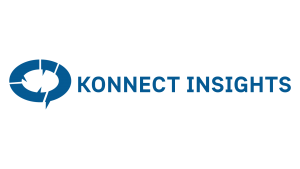Social listening plays a crucial role in effective social media audience segmentation. By monitoring and analyzing conversations across various social media platforms, businesses can gain valuable insights into their target audience’s preferences, behaviors, and needs. These insights enable businesses to segment their audience effectively, allowing them to deliver highly personalized and relevant content. Let’s explore some key aspects of how social listening contributes to audience segmentation.
Capturing Diverse Communications

One of the primary benefits of social listening is the ability to capture diverse communications from your target audience. With billions of active users on social media platforms worldwide, there is a wealth of information being shared every second. By utilizing advanced social listening tools, businesses can capture and analyze this vast amount of data in real-time.
Identifying Keywords and Hashtags
Keywords and hashtags are essential elements in effective social media audience segmentation. With social listening, businesses can identify the keywords and hashtags that resonate with their target audience. Analyzing these keywords helps companies understand the topics that are most relevant to their customers and prospects.
For instance, a health supplement brand may discover through social listening that keywords like “organic,” “vegan,” or “gluten-free” are frequently mentioned by their target audience. Armed with this knowledge, they can create targeted content focusing on these key areas, appealing directly to specific segments within their larger audience.
Demographic Insights
Social listening also provides invaluable demographic insights that aid in effective audience segmentation. Businesses can gather information about their audience’s age range, location, gender distribution, and other demographic factors by analyzing the profiles and content shared by users on social media platforms.
For example, a luxury travel agency may identify through social listening that their target audience consists mainly of affluent individuals in their 40s and 50s who enjoy adventure and unique experiences. Armed with this demographic insight, the agency can tailor its content and marketing campaigns specifically to resonate with this segment.
Sentiment Analysis
Understanding the sentiment behind social media conversations is crucial for effective audience segmentation. Sentiment analysis allows businesses to gauge how their audience feels about specific topics, products, or brands.
Monitoring User Interactions
Social listening also helps businesses monitor user interactions within their target audience. By observing how users engage with each other on social media platforms, companies can gain insights into the relationships between different segments within their audience.
For example, an electronics manufacturer may notice through social listening that tech enthusiasts frequently interact with each other by sharing tips and recommendations. Armed with this information, the company can create targeted content or even foster community engagement initiatives to encourage these interactions further.
Tailoring Content for Specific Segments

Perhaps the most significant role of social listening in effective audience segmentation is enabling businesses to tailor their content for specific segments. By understanding the preferences, interests, and challenges of various segments within their larger audience, companies can create highly personalized content that resonates with each group.
For example, a financial services firm may discover through social listening that young professionals are particularly interested in investment strategies for millennials. Armed with this knowledge, they can create blog posts, videos, or webinars specifically addressing this topic and promoting it through targeted digital channels.
Conclusion
Social listening plays a vital role in effective social media audience segmentation. It enables businesses to capture diverse communications, identify keywords and hashtags, gain demographic insights, perform sentiment analysis, monitor user interactions, and tailor content for specific segments. By leveraging the power of social listening, businesses can engage their target audience more effectively and deliver personalized experiences that drive meaningful results.






























